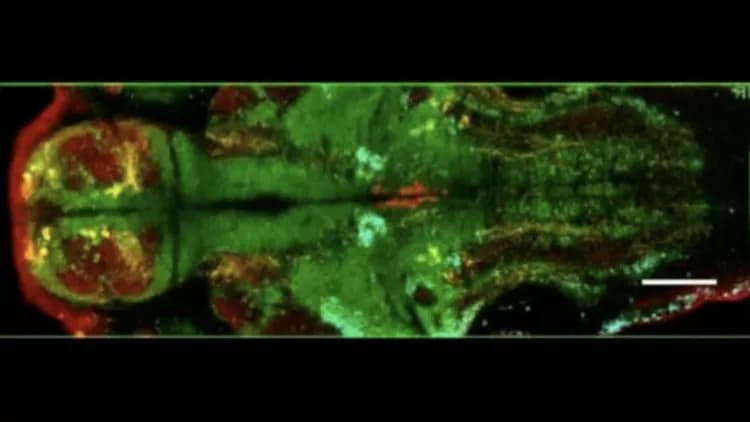
Brain's Alertness Circuitry Conserved Through Evolution
Using a molecular method likely to become widely adopted by the field, researchers supported by the National Institutes of Health have discovered brain circuitry essential for alertness, or vigilance -- and for brain states more generally. Strikingly, the same cell types and circuits are engaged during alertness in zebra fish and mice, species whose evolutionary forebears parted ways hundreads of millions of years ago. This suggests that the human brain is likely similarly wired for this state critical to survival.
"Vigilance gone awry marks states such as mania and those seen in post-traumatic stress disorder and depression," explained Joshua Gordon, M.D., Ph.D., director of the NIH's National Institute of Mental Health (NIMH), which along with the National Institute on Drug Abuse, co-funded the study. "Gaining familiarity with the molecular players in a behavior -- as this new tool promises -- may someday lead to clinical interventions targeting dysfunctional brain states."
Karl Deisseroth, M.D., Ph.D., Matthew Lovett-Barron, Ph.D., and Stanford University, Palo Alto, California, colleagues, report on findings using a neural activity screening technology they call Multi-MAP (Multiplexed-alignment of Molecular and Activity Phenotypes) online Nov. 2, 2017 in the journal Cell.
For the first time, Multi-MAP makes it possible to see which neurons are activated in a behaving animal during a particular brain state -- and subsequently molecularly analyze just those neurons to identify the subtypes and circuits involved.
In this case, the researchers used the technique to screen activity of neurons visible through the transparent heads of genetically-engineered larval zebra fish. They gauged vigilance by measuring how long it took the animals to swish their tails in response to a threatening stimulus.
A molecular analysis revealing subtypes led to identification of six suspect circuits composed of distinct populations of neurons that modulate neuronal activity, only one of which had previously been linked to vigilance. Virtually the same players were operative in follow-up experiments examining such reaction time-related circuitry in mouse brain. Using optogenetics -- another breakthrough exploratory tool developed by Deisseroth and colleagues -- the researchers narrowed the field to three circuits that definitively boost alertness in mice, including the one previously known. The other three are thought to play a reportorial rather than regulatory role.
Materials provided by NIH/National Institute of Mental Health. Note: Content may be edited for style and length.
Disclaimer: DoveMed is not responsible for the accuracy of the adapted version of news releases posted to DoveMed by contributing universities and institutions.
References:
Matthew Lovett-Barron, Aaron S. Andalman, William E. Allen, Sam Vesuna, Isaac Kauvar, Vanessa M. Burns, Karl Deisseroth. (2017). Ancestral Circuits for the Coordinated Modulation of Brain State. Cell. DOI: 10.1016/j.cell.2017.10.021
Related Articles
Test Your Knowledge
Asked by users
Related Centers
Related Specialties
Related Physicians
Related Procedures
Related Resources
Join DoveHubs
and connect with fellow professionals

0 Comments
Please log in to post a comment.